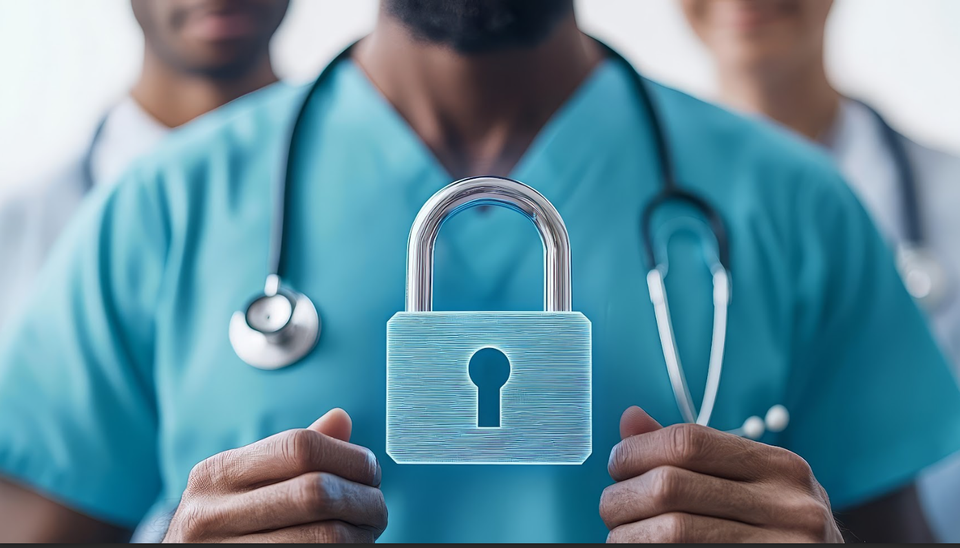How to Prevent Cybersecurity Attacks in Healthcare
Table of Content
Cyber attacks are a growing concern for all industries, but healthcare is particularly vulnerable. Medical institutions hold vast amounts of sensitive data, making them prime targets for cyber criminals.
Data breaches in this sector aren't just about stolen credit card numbers or leaked social security details—they can affect patient care and put lives at risk. A single ransomware attack can lock down systems, delay surgeries, and stop life-saving treatments. It's no longer a question of "if" but "how" healthcare organizations can defend against these cyber threats.
Here are some practical ways:
Train Your Staff
You may wonder why training staff is at the top here. That's because more than 80% of network security incidents are caused by human error.
In healthcare, where every click and data entry matters, this highlights just how important it is to have solid staff training in place. After all, they're your first line of defense against cyber attacks.
Make sure everyone in your organization is well-equipped to spot and prevent potential threats. Regular training sessions should cover topics like:
- Identifying phishing emails
- Creating strong passwords
- Proper handling of patient data
- Using secure networks
It's also best to don't just lecture—make it interactive. Use real-world examples and simulations to drive the points home. Consider running mock phishing campaigns to test and reinforce what they've learned.
Remember, cybersecurity is everyone's responsibility. From doctors to receptionists, everyone needs to be on board.
Keep Your Systems Updated
Outdated software is hackers' favorite playground, as they know it leaves gaps in your security defenses. So, what can you do to keep everything spotless? Set up automatic updates for all your software and operating systems, which include:
- Electronic Health Record (EHR) systems
- Medical devices
- Office computers
- Mobile devices used by staff
And let's not forget about your anti-malware and antivirus software. These tools need regular updates to stay effective against the latest cybersecurity threats.
Now, think about whether you can handle the responsibility of keeping everything up to date. Is there someone designated in your organization to monitor software updates regularly? If not, working with an IT support services provider is a smart move. This tech expert can lighten the load, ensuring all systems are protected, updated, and running smoothly.
Implement Strong Access Controls
Nowadays, almost everything is centralized, which is great for efficiency but can pose some risks if we're not careful. Since your healthcare data is stored in one place, it becomes a tempting target for cybercriminals. To keep that information safe, you must implement strong access controls. That means making sure that only the right people can access specific data based on their roles.
For example, a nurse might need access to patient records to provide care, but a billing specialist wouldn't need to see those same records. This concept is known as the "principle of least privilege," which means giving staff access only to the information necessary to perform their jobs.
Remember to review and update access regularly. When employees change roles or leave the organization, ensure their access is adjusted or revoked promptly.

Strengthen Password Policies and Authentication
It may seem like basic advice, but weak passwords are still a major security risk. Cybercriminals can easily exploit simple or repeated passwords.
One way to address this is by enforcing strong password policies across all levels of staff. Encouraging or requiring codes to contain a mix of letters, numbers, and special characters can significantly enhance security.
Two-factor authentication (2FA) is another powerful tactic, too. With 2FA in place, a password alone won't be enough to access sensitive systems.
Employees will also need a secondary form of identification, such as a code sent to their phone, to log in. This added layer makes it much harder for hackers to breach systems, even if they manage to steal passwords.
Encrypt Data Wherever Possible
Encryption is one of the best ways to protect digital assets, and that's a must in the healthcare sector. This security practice is like putting your data in an online vault that only authorized people can unlock. From patient records to emails between staff members, encrypting data can reduce the risk of exposure.
It's important to encrypt data both at rest (when it's stored) and in transit (when it's being transferred between devices). That's because even if someone manages to intercept or steal the data, they won't be able to read or use it without the encryption key.
Fortunately, most modern systems already come with encryption tools that are easy to turn on. And don't forget those mobile devices your staff may be using—phones and tablets need encryption, too, just in case one gets lost or stolen.
Backup Data and Have a Recovery Plan
Ransomware attacks are on the rise in healthcare. These nasty attacks encrypt and hold your data hostage until you pay up. The best defense? Regular, secure backups.
A robust data backup system is a non-negotiable aspect of cybersecurity. If an attack occurs, having backups can be the difference between a crisis and a manageable setback. These should be done regularly and stored in a separate, secure location—preferably off-site or in the cloud.
Along with backups, healthcare organizations need a solid recovery plan to minimize downtime. Your incident response plan should cover the following:
- Detecting and reporting incidents
- Containing the breach
- Assessing the damage
- Notifying affected parties
- Recovering systems and data
- Learning from the incident to prevent future occurrences
Make sure everyone knows their role in the plan. Run regular drills to keep the team sharp and identify any weaknesses in your process.
Simulating a cyberattack as part of your disaster recovery plan can help identify any weak spots and ensure all employees are prepared for a real-world scenario.
Use Network Segmentation
Let's talk about network segmentation—it's a great way to limit the damage if a cybersecurity breach ever happens. Think of it like dividing your network into smaller, isolated sections. If someone does manage to break into one part, like the segment that handles emails, they can't instantly jump to more sensitive areas, like the part with patient records.
This setup also makes it convenient to spot unusual activity. If something suspicious happens in one segment, it's easier to isolate and address the issue before it spreads. It's like putting firewalls between different rooms in a house—if a fire breaks out in one room, it doesn't burn down the whole place.
Overall, network segmentation helps shrink the attack surface and makes it more difficult for cybercriminals to move around within the system.
Wrapping Up
Cybersecurity in healthcare isn't something that can be left to chance. After all, your patient's safety and the organization's reputation are on the line here. Every breach poses risks beyond just data loss—it undermines trust and could even jeopardize lives.
Therefore, it's vital to be diligent in your efforts. Establish a comprehensive cybersecurity strategy to safeguard sensitive information. If that feels like a lot to tackle on your own, don't hesitate to bring in cybersecurity pros. With their expertise, combined with your brilliant ideas, you can build a healthier, more secure environment for everyone involved.










